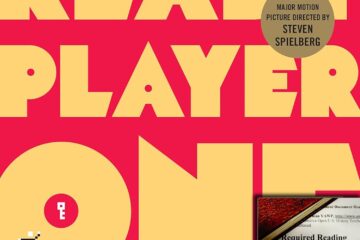The Story of an Hour by Kate Chopin
Story of an Hour by Haddon Buschmann
“The Story of an Hour” by Kate Chopin is a short story about a female protagonist named Louise Mallard who feels the joy of freedom after hearing of her husband’s death. Chopin was one of the first in a long line of feminist writers. This story was controversial in America during the late 1890s because it opposed the common American opinions of patriarchy and how a wife should act and feel. It demonstrates Chopin’s views about a woman’s role in society and their oppression.
Louise is introduced in the story as having been “afflicted with heart trouble.” This means she is having problems with her heart, or feelings, which references her relationship problems with her husband. Josephine, her sister, and Richard had assumed she would be heartbroken at the news of her husband’s death, so they revealed it to her in “veiled hints that revealed in half concealing.” Her reaction is compared to the normal and expected reaction a wife would have, but Louise did not have a “paralyzed inability to accept” the truth. Instead, she cried with a “storm of grief.” Comparing her grief to a storm points out the despair she is currently feeling, but no storm lasts forever, and there are blue skies after the storm. In her room was an “open window” and an “open square” that showed the “new spring life.” This represents a new beginning for Louise because she is transitioning into a life more free and growing as plants do in the spring. The bright imagery that is utilized shows the positive change that will happen for Louise.
A shift occurs within Louise as she realizes the feeling that she had felt was elation once she realized she would be free. However, that is not how one is supposed to feel according to society, so she tried to “beat it back with her will” and felt terrified of her own feelings. She uses an oxymoron to describe her delight as “monstrous joy” because even though she is joyous, it is a dangerous joy that might kill her. She eventually accepts the fact that she is in control of her own life. Even though “she loved him–sometimes,” that does not compare to the fact that she could live independently. Her freedom is so important to her that it is the deciding factor in whether she wants to live or not.
At the end of the story, she figures out that her husband is alive, and she drops to the floor. The doctors claimed that she died from “the joy that kills.” There is irony in that statement because everyone assumed that she was so happy to see her husband that she died. However, Louise did not die from joy, but rather despair at the realization that she would not be able to control her life. She had gotten so happy in just under an hour that it killed her once it was stripped from her. This story depicts the widespread problem of women having an unequal role in marriages. This would sometimes be so severe that it would make women want to die. The man would be able to control the lives of women so that they had no independence and had to conform. Chopin uses a feminist perspective throughout this story, and she demonstrates how a patriarch could completely dominate a woman’s life enough for her to die.
“The Story of An Hour” portfolio by Sophia Gamboa
“The Story of an Hour” by Kate Chopin is about a woman Louise Mallard, in a standard marriage, who is given the news that her husband was killed in a railroad disaster. She goes to her room, and she grieves her husband. After her grief lessens, she begins to feel and sense that she could finally be free in the future. In this story, there are several types of defense mechanisms expressed to manage her grief. The main character Mrs. Mallard expresses them along with the theme of feminism being presented throughout the story.
Defense mechanisms such as repression and regression are shown in the story to show how the characters do not want to handle their emotions. This causes them to either retreat to an earlier time in their lives or by blocking these feelings altogether. Louise’s sister Josephine breaks the news about Mr. Mallard to her but instantly feels repression because Louise suffers from heart troubles. Josephine does not want the news to shatter her sister, so she had to, “break to her as gently as possible.” Louise goes upstairs and sits in a chair quietly mourning the death of her husband, “There stood, facing the open window, a comfortable, roomy armchair. Into this she same, pressed down by a physical exhaustion that haunted her body and seemed to reach into her soul.” After a while, she looks at her open window, acting as a threshold, and her feelings start to change. She stares at the outside world before her which gives her fresh air and relief. Louise shows regression once she sits in the chair, “She sat with her head thrown back upon the cushion of the chair, quite motionless, except when a sob came up into her throat and shook her, as a child who has cried itself to sleep continues to cob in its dreams.” Her feelings reverted to an earlier time in her life when she felt like a small child in distress. Louise holds her thoughts back and feels, “there was something coming to her, and she was waiting for it, fearfully.” After sitting in silence, she finally says, “free, free, free!” This response goes to show how women during this time felt trapped in their marriages and could not say anything about it as it would not fit the standard and seem socially unacceptable. Her words, “free, free, free!” shows how her terror is gone and she is finally free. The theme of feminism is shown when Chopin writes about controlling relationships. Being in a relationship, even with a good man, women did not feel free, “There would be no one to live for during those coming years; she would live for herself.” Louise continues to whisper her socially improper words, “Free! Body and soul free!” because her grief is different from how other women would have reacted. The unfortunate ending of the story ends with Louise dying of heart disease, “of the joy that kills” after finding that her husband had returned home was nowhere near the accident. Louise died because her freedom had been taken from her.
“The Story of an Hour” by Kate Chopin is a story about feminism and the lack of power women had. Louise Mallard’s character expresses different defense mechanisms as she oversees her grief. As soon as Louise gets the opportunity to be free any hopefulness to a life filled with growth and new beginnings dies with her.


